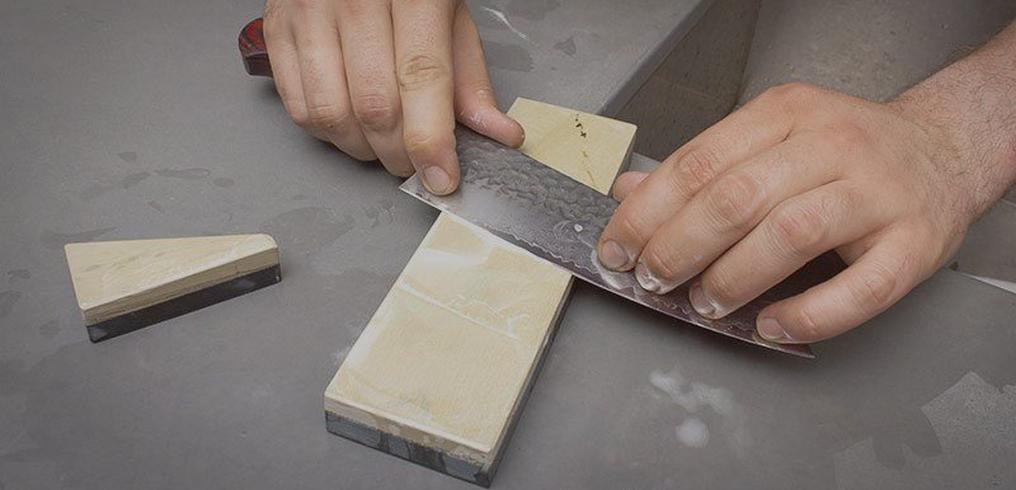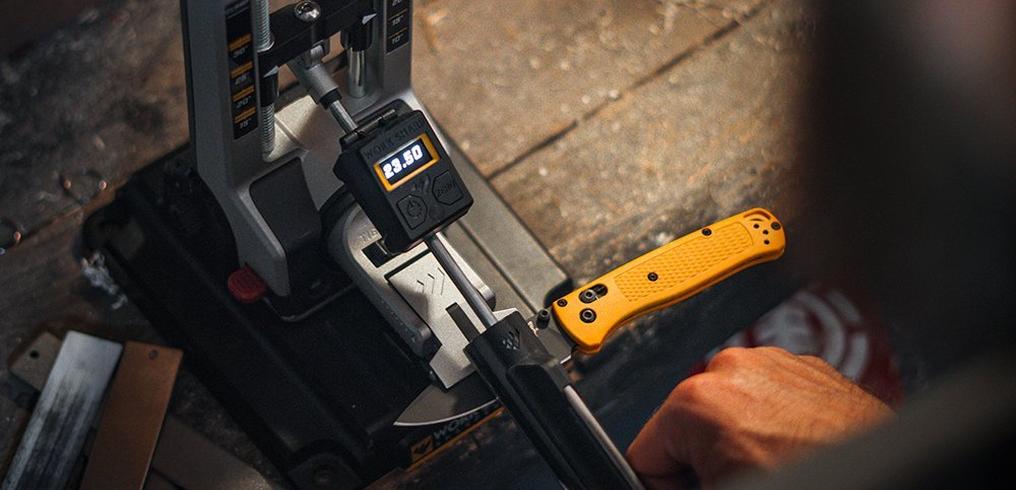Hairline cracks in your Naniwa Professional sharpening stone
Little cracks in your Naniwa sharpening stone: they do occasionally occur. Especially with the stones from the Professional collection this is sometimes the case. We call these cracks hairline cracks. These small notches shouldn’t be confused with actual tears. They do not affect the quality of the sharpening stone. However, by properly maintaining your Naniwa Professional sharpening stone you can prevent these hairline cracks. Or at least limit them to a minimum.
It is important to realize that these sharpening stones do not need that much water. To improve the drainage of slurry and to make sure sharpening is a breeze, you can sprinkle them with water. Submerging the stone is neither wise nor useful: the stones do not absorb water.
Magnesium as a binding agent
This is specifically relevant for the Professional collection (previously called Chosera). Compared to, for instance, the Super stones and the Diamond collection the Professional sharpening stones are not synthetic resin, but magnesium-bound. The main advantage of this binding agent is that the sharpening stones have more sharpening particles per surface unit. As a result, when you move your knife over such a sharpening stone, the edge will come into contact with a larger amount of sharpening particles (for the Professional collection this is aluminium oxide). The result: you sharpen faster and more accurately.
However, the disadvantage of magnesium is that it reacts quite strongly to water. For that reason we strongly advise against exposing magnesium bound sharpening stones to (a lot of) water. If you do decide to sharpen using water it is important to properly let the stone dry after use. First you need to rinse off the remaining slurry. Please note: rinse it off with a little bit of water, do not submerge the stone. Afterwards dry the stone with a microfiber cloth. This material is great because it easily absorbs water.
Slowly let it dry
Now it is key to let the sharpening stone dry gradually. In this case there is no sense in rushing things. Put the stone on its side to make sure any remaining water can drip off. Make sure the stone won’t dry in the sun or on the heater. After all, the heat of the sun or heater will cause the surface to dry faster than the core of the stone. The tension that is created could cause small cracks in the sharpening layer. We call these cracks hairline cracks. You can reduce the chance of these cracks by wrapping the stone in the microfiber cloth you also used to dry off the stone. As a result the surface and the rest of the stone dry at approximately the same speed.
Is it a bad thing if you do happen do come across hairline cracks? No, it isn’t. A smooth sharpening stone will, of course, look better and water could seep in the cracks which means that it could take a little longer for the stone to dry. But considering the fact that you already need to be patient when it comes to drying the stone, this shouldn’t be an issue. The hairline cracks will – as mentioned before – not affect the sharpening results, which is also something Naniwa confirmed. However, if these cracks do affect your sharpening process you could, of course, always appeal to the guarantee Naniwa hands out with their stones.






